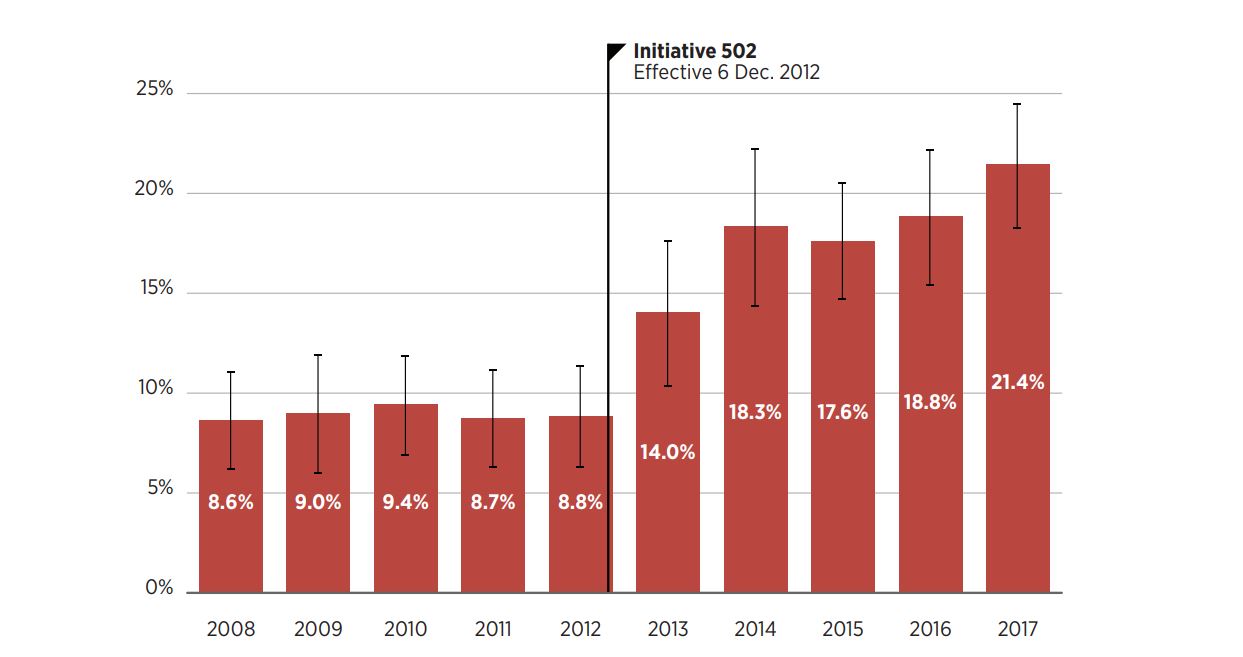
Cannabis Use Among Drivers in Fatal Crashes in Washington State Before and After Legalization
This study examines marijuana involvement in fatal crashes in Washington State before and after recreational use of cannabis became legal in the state.
January 2020
Suggested Citation
Abstract
Introduction
Washington State Initiative 502 (I-502), effective Dec. 6, 2012, legalized possession of small amounts of cannabis for recreational use by adults aged 21 years and older. It also included a prohibition against driving with 5 or more nanograms of delta-9-tetrahydrocannabinol (THC) per milliliter of blood, along with a zero tolerance prohibition for drivers younger than 21 years of age. THC is the main psychoactive component in cannabis and detection of THC in blood is suggestive of recent use. A previous study by the AAA Foundation for Traffic Safety examined data from drivers involved in fatal crashes in Washington State in years 2010-2014 and estimated that the proportion of drivers with detectable THC approximately doubled several months after I-502 became effective. The research reported here updates the previous study with three additional years of data, post-legalization.
Key Findings
Five years after I-502, the proportion of fatal-crash-involved drivers who were THC-positive has remained approximately double the level observed before I-502. An estimated 21% of all drivers involved in fatal crashes in Washington State in 2017 were THC-positive, higher than in any other year in the 10-year period examined.
Methodology
Data on all drivers involved in fatal crashes in the state of Washington from 2008 through 2017 were obtained from the Washington Traffic Safety Commission (WTSC). The data included detailed information regarding whether each driver was tested for drugs, what type of specimen was tested (e.g., urine, blood, both, neither), and what drugs, if any, returned a positive test result.
The current study examined whether each driver whose blood was tested for drugs returned a positive test result for THC. The method of multiple imputation was used to estimate the proportion of THC-unknown drivers who were positive for THC.
Results
The Figure shows the estimated percentage of all drivers involved in fatal crashes each year in Washington State who were THC-positive, based on both actual test results and multiple imputation of missing values. Before I-502 became effective, an average of 8.8% of all drivers in fatal crashes statewide each year were THC-positive. After I-502 became effective, this increased to an average of 18.0%.

Suggested Citation